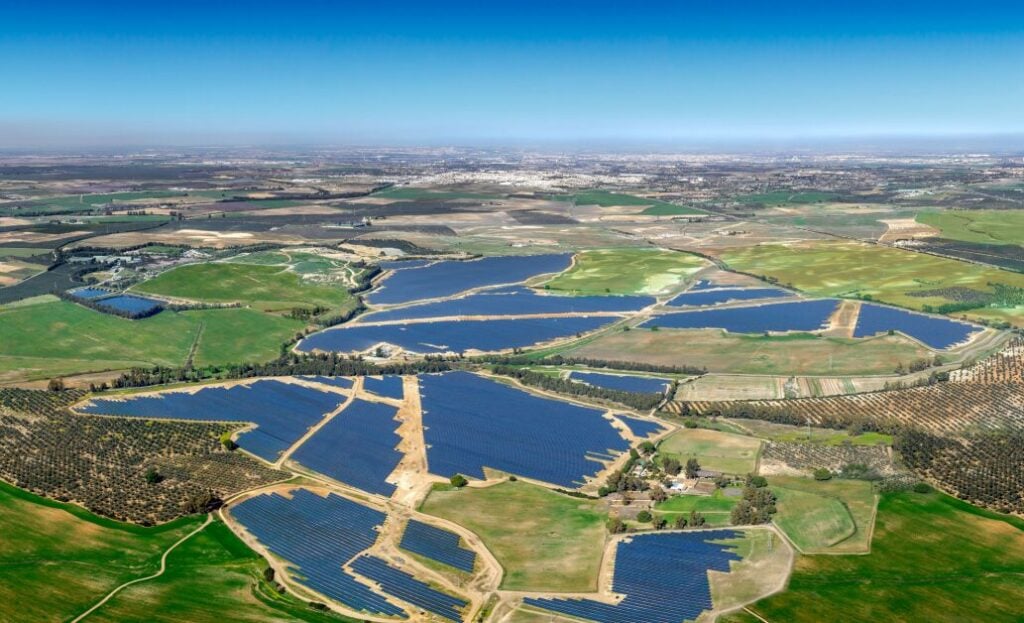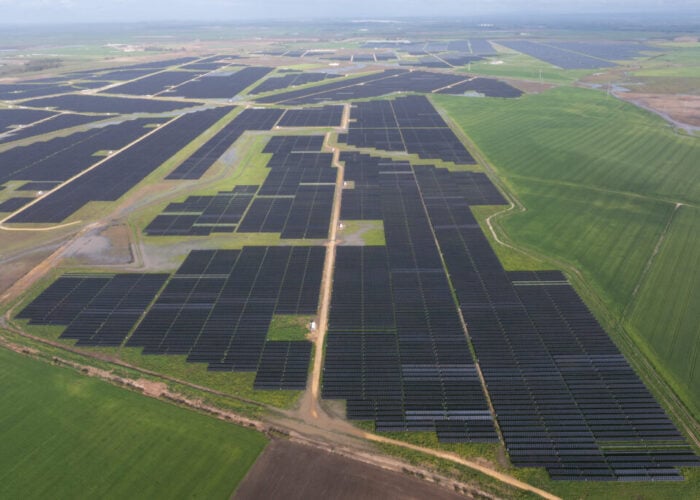
The huge power outage that hit Spain and Portugal in April was initially blamed on the countries’ high penetration of solar and wind generation. Jonathan Touriño Jacobo explores the emerging evidence of wider systemic problems and some of the solutions already being implemented.
Editor’s note: Since the publication of this feature, the grid reform decree was rejected last month during a vote in the Spanish Congress of Deputies. Days after that vote, the Spanish government came up with a new royal decree, which, among other proposals (in Spanish), still aims to facilitate the development of energy storage and its co-location with renewables.
Try Premium for just $1
- Full premium access for the first month at only $1
- Converts to an annual rate after 30 days unless cancelled
- Cancel anytime during the trial period
Premium Benefits
- Expert industry analysis and interviews
- Digital access to PV Tech Power journal
- Exclusive event discounts
Or get the full Premium subscription right away
Or continue reading this article for free
In late April 2025, Spain and Portugal witnessed a complete power blackout that lasted for more than 12 hours. From 12:33 for half a day, there was no electricity in the country, and those of us overseas were receiving messages from family members back home asking if the lights were still on for us.
It was an unfortunate event that temporarily cut Spain and Portugal off from the rest of the world and prompted a swath of speculations and accusations that lasted for nearly two months, until the Spanish government and Redeia, the parent company of Spanish transmission system operator (TSO) Red Eléctrica, released the reports of their investigations into the blackout in July.
The government report’s conclusions emphasised a three-pronged issue that ultimately caused the Iberian blackout: insufficient control capacity on the grid, unusual voltage oscillations and improper disconnection of some power plants. These conclusions came with actual measures and laws implemented that aim to fix the problems that happened in April and avoid a repeat, while improving the Spanish grid.
What happened on 28 April 2025
Less than a month after the blackout in the Iberian Peninsula, Sara Aagesen Muñoz, the Spanish minister for the ecological transition and the demographic challenge, first ruled out a cyberattack during a Congress of Deputies’ session. During that same session, she gave details of what occurred minutes before the blackout, which happened at exactly 12:33.
The first unusual event happened at 12:03 with two oscillations that were detected both in the Iberian Peninsula and outside. The first oscillation lasted for less than five minutes, during which strong oscillations in both voltage and frequency occurred.
Another oscillation occurred minutes later at 12:16, with a variation of 0.6 Hz, leading to voltage fluctuations that resulted in voltage drops between 405kV and 380kV at the most affected substations.
Finally, a third oscillation occurred at 12:19 and lasted for three minutes. The Spanish minister said at the time that this second oscillation was more frequent within the European system.
In its report, Redeia – the parent company of Spanish TSO Red Eléctrica – identified the origin of the oscillations to a solar PV plant in Extremadura, without naming it, but making it very simple to identify that it was Iberdrola’s Nuñez de Balboa. At the time of the first oscillation the solar PV plant was generating nearly 250MW of power and then increased to 350MW during the 12:19 oscillation incident.
Despite the fact that Redeia identified a solar PV plant to be at the cause of these oscillations, this incident alone was not enough to be the cause of the blackout, as Héctor de Lama, technical director at Spanish trade association Spanish Photovoltaic Union (UNEF), highlights.
“An electrical system is prepared for that to happen. For instance, in Spain, there are times when one or two entire nuclear plants are shut down very quickly and nothing happens,” explains de Lama adding that each of these nuclear plants represents 1GW of capacity, whereas the Nuñez de Balboa plant does not even reach 500MW of grid connection capacity.
“Contrary to some early speculations, both the Spanish government and the Spanish TSO Red Eléctrica de España concluded in their respective reports that renewable generators not only cannot be blamed for the blackout on 28 April, but should also be seen as potential solutions to help prevent such incidents in the future,” adds the global head of grid at BayWa r.e., José Andres Visquert.
Solar PV participating in voltage control
It did not take the Spanish government much time to take action after the blackout, and only days after releasing its report with recommended measures, it approved some of those through a royal decree law.
A key one for the solar industry is an update of ‘Operating Procedure 7.4’, which will allow solar PV to participate in voltage control, which was one of the issues highlighted during the blackout, as only conventional generators were able to participate in this. During the blackout, the regulation that was in operation was from 2000, despite a draft from the Spanish TSO that included renewables having existed since 2020.
“One of the major conclusions of the blackout, I would say, is that the technology moved much faster than regulation. Although solar PV could have provided that stability, regulation moved more slowly, and so there was too much dependence on thermal power plants that did not behave adequately [that day],” explains de Lama.
Chris Rosslowe, senior energy analyst at think tank Ember, says this is a lesson that should be applied well beyond the Iberian Peninsula.
“The broad lesson here for countries beyond Spain is to make sure that you’re technology neutral as far as possible when it comes to providing these key system services and acknowledge that now we’re at a point where renewables, battery storage and these new technologies that we know we need for the future power system can actually provide some of these services that have traditionally been provided by fossil fuel or conventional power stations. And we need a mindset shift in the way that grids operate to keep track with the transition,” adds Rosslowe.
This will open a new electricity market for solar PV and wind projects with an installed capacity of 5MW or above, as they’ll be able to compete with thermal plants in the voltage control market starting from next year. This marks an important step for renewable energy and the Spanish grid overall, as having these plants providing voltage control will most likely reduce costs.
Not every installed power plant of more than 5MW will be able to participate in it, as they might not meet the requirements needed but most of the ones installed after 2020 will, says Baywa’s Visquert.
“Most renewable generators connected after 2020—which represent the vast majority—already have voltage-control capabilities as mandated by the Spanish grid code (NTS 2.1),” adds Visquert. According to data from Red Eléctrica, Spain added more than 23.5GW of solar PV since 2020 and had a total of 32.4GW installed at the end of 2024.
Héctor de Lama explains that in 2024, Spain spent around €2 billion (US$2.3 billion) to have thermal plants on standby in case of any incident happening, which the blackout showed clearly did not work.
“In the blackout we’ve seen multiple instances of system actors, let’s say, not behaving as the system operator expected them to do, or they should have done based on existing kinds of regulations, so that that applies across many generation types,” adds Rosslowe.
But the participation of solar PV plants will bring even other benefits for the solar industry. As de Lama says, with solar being able to do voltage control at a lower cost, it will most likely force thermal plants to be decommissioned. This will allow for more solar PV to be added to the Spanish grid in general, and not just for voltage control.
“That implies less curtailment, whether market or physical curtailment knots. And that means much more integration of renewables, fewer emissions, cheaper prices … in other words, it’s a very good thing,” says de Lama, adding: “Voltage control is a nodal issue. It is a matter of each node in the network, so having renewables do it instead of thermal power plants is much more appropriate because we are much more granular, much more distributed in the territory [than thermal plants].”
Co-locating with storage
Among the other regulatory improvements that will be implemented in Spain is a faster permitting process to co-locate battery energy storage systems (BESS) with renewables. Permitting energy storage projects, either as a standalone or hybridised with solar or wind, was an “extremely difficult” task in Spain, says de Lama. The Spanish government aims to install 22.5GW of storage by 2030, but is currently far behind compared with other European countries. This change will reduce the permitting times to add energy storage.
“Standalone and co-located BESS can offer fast frequency response (FFR) with activation times below one second, helping stabilise the grid during perturbations. Additionally, grid-forming inverters and Flexible AC Transmission Systems (FACTS) can contribute by adding synthetic inertia and oscillation-damping capabilities to enhance the stability, security and robustness of the electricity infrastructure,” explains Visquert.
On the subject of frequency response, Rosslowe adds: “[BESS] can also provide essential grid services. Even though the primary cause of the blackout wasn’t a frequency issue this time, batteries can provide very fast frequency support. It would strengthen the resilience of the grid against other potential [blackouts].”
Similar to BESS, adding more pumped hydro storage plants – so long as they fulfil the necessary environmental requirements – could also be beneficial for the grid, says Jonathan Bruegel, power sector analyst at the Institute for Energy Economics and Financial Analysis’ European team. However, these projects can be very costly and would most likely require government incentives.
“This technology is expensive, takes time to build, but if you have it in the system, it will not last for 10-20 years. It will last for 100 years. The oldest plants we have in Europe are from the end of the 19th century, and some are still running. To me, it’s a perfect complement to a fully renewable system, where you have lots of wind and solar.”
System inertia
Aside from energy storage, a solution that could be quickly implemented would be a demand-side response directed towards industrial consumers, says Bruegel. Plant factories participating in this would receive incentives for stopping or dropping their production load immediately for a certain amount of time.
“You can even do that for residential customers,” says Bruegel. “There is a device you can install, which is connected to the grid, and will respond automatically, adjusting the consumption in your home to the grid load. If the grid is overloaded, your device in your home will reduce automatically.”
Implementing this would not require any major technological improvement, being a purely regulatory matter that would be fast to implement, adds Bruegel. “Demand response is really underdeveloped, both at the residential, commercial and even industrial side,” he explains.
System inertia has also been highlighted as one of the technologies to implement in the days and weeks after the blackout. However, de Lama emphasises the fact that the blackout was not caused by a lack of inertia, as shown in both reports.
“There was no lack of inertia, there was plenty of inertia,” says de Lama, adding that the synchronous compensators that are being added now are not used for inertia but voltage control. Although not needed now, the fact that these synchronous compensators are being added for voltage control will have a positive effect in the future, in terms of inertia. When Spain closes all its remaining nuclear power plants, these synchronous compensators will be able to cover the loss of inertia from the shutdown of nuclear plants.
“These synchronous compensators are versatile machines that are currently needed for voltage control, but in the future they may provide other benefits,” adds de Lama. Such as when Spain decommissions its remaining nuclear power plants, and with it, the need for inertia arises.
Rosslowe adds that synchronous compensators are a key technology to consider, one that was highlighted in the reports. “It’s an existing technology that is already being rolled out that just needs more of a push behind it.”
More interconnection?
Finally, it is no surprise that Spain and Portugal currently operate as an island in terms of the grid, with very limited crossborder interconnection with the rest of Europe through France. And the people PV Tech Power spoke to agreed that, had Spain been better interconnected with France and the rest of Europe, the blackout would have not been as bad as it was, and it wouldn’t have taken more than 12 hours to reconnect the entire grid.
“If the interconnection between France and Spain was a stronger capacity, yes, it would have helped. But overall, Spain is not a very much an importer-reliant country,” says Bruegel.
Rosslowe adds: “The report clearly stated that if Spain had been better interconnected with its neighbouring countries, principally France, some of the oscillations that occurred and destabilised the system would have been less likely to occur.
“It’s well documented that the connection between France and Spain is a weak connection, and it’s a real bottleneck on allowing the rest of Europe to benefit from the renewable resources that are in Spain.”
Almost at the same time as the reports were released, news of an interconnection financing from the European Investment Bank (EIB) was released. The investment from the EIB will support the construction of the Bay of Biscay interconnector, which will increase the electrical exchange capacity between France and Spain by 2.2GW, bringing the total to 5GW once the project is operational.
One thing is clear, though, is that the Spanish government and the involved parties have acted quickly to implement solutions that aim to avoid a repeat of what happened on 28 April. The blackout has highlighted that renewables are moving at a faster pace than the grid and even regulation in the case of voltage control. Making sure that the transformation of the grid and the regulations go hand in hand with the pace at which renewables are added will be very important to ensure everything works accordingly and that Spain and Portugal don’t get disconnected from the world for half a day again.
“As Spain’s energy mix continues to evolve toward higher shares of renewables, modernising grid operations and regulation will be key to ensuring a secure and stable electricity supply,” concludes Visquert.






